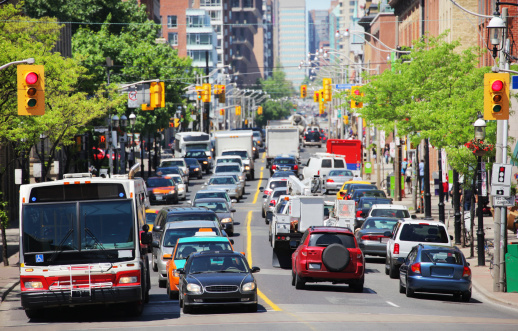$40 million federal grant to be used to improve road safety in Tampa area

A $40 million Department of Transportation (USDOT) grant awarded to Hillsborough County will be used to improve the quality of roads and pedestrian safety in the Tampa area, according to Evangeline Linkous, program director of USF Master of Urban and Regional Planning program.
Using the grant, which was awarded on Feb. 2, to address concerns with traffic accidents and pedestrian safety in the Tampa Bay area is something Linkous said is necessary for two reasons — congestion and safety.
The public is over-reliant on private vehicle transportation, which leads to traffic congestion and traffic-related fatalities that appear commonly on Tampa’s roads and busy highways, according to Linkous.
By installing safer and concrete options for pedestrians, bicyclists and other transit users, she said the grant will help alleviate traffic congestion.
Fowler Avenue, a popular roadway near USF, is accompanied by more than 60,000 cars per day and is also known as one of the more fatal roads in Hillsborough County for pedestrians, according to Tampa Bay 10.
Tampa also had the third highest number of accidents in 2021 across U.S. states, where close to 17,000 car accidents were reported by police, according to Oakland Park’s website.
Almost $20 million has been granted to Hillsborough County, where it will focus on improving safety for pedestrians, bicyclists, transit users and drivers in 22 locations across the county, according to the USDOT.
The grant will aid project development through low-cost countermeasures such as creating and maintaining sidewalks and leading pedestrian intervals. Other projects will include curb bulb-out, improving crosswalks, bicycle lanes and speed management in high-priority locations, according to USDOT.
Many of these locations also include routes to schools, according to USDOT. These corrective actions will serve to provide a safe systems approach within the city’s roads.
Pedestrians who walk on Tampa’s roads are most vulnerable and are part of 39% of crashes, while also being most affected with life-altering injuries, according to Vision Zero.
An additional $20 million was awarded specifically for the city of Tampa to implement projects similar to the ones being established throughout the broader Hillsborough County grant. Some of the projects include pedestrian mid-block crosswalks, rapid-flashing beacons, high-visibility crosswalks, signage and improving marking visibilities, according to USDOT.
A portion of the funds will also be used to develop a Pedestrian Safety and Equity Action Plan, which goes over how to provide a reliable framework for other state and local contributors to develop an action plan for pedestrian safety.
The main points this plan covers are planning and designing for safety projects, involving stakeholders and collecting data to identify problems. It also includes analyzing the information collected, selecting the most appropriate solutions, providing funding and creating the said plan, according to the Federal Highway Administration.
Linkous said Tampa is faced with many struggles when it comes to its transportation systems. Although funding is directed toward secondhand users of the roads such as pedestrians and bicyclists, Linkous said there are many issues that need to be addressed.
Tampa still struggles on figuring out how it can provide continuous maintenance and transportation system enhancement improvements, according to Linkous.
She said such efforts will require big steps with planners and those in charge of managing Tampa’s roads and urban transportation.
While there is still a long way to go to make Tampa’s roads safer, Linkous said that those in the area should not expect immediate changes in transportation to occur in the near future.
“We have not figured out how to fund the much-needed system improvements and this is something that will require continuous effort by many different stakeholders in the coming years,” she said.








